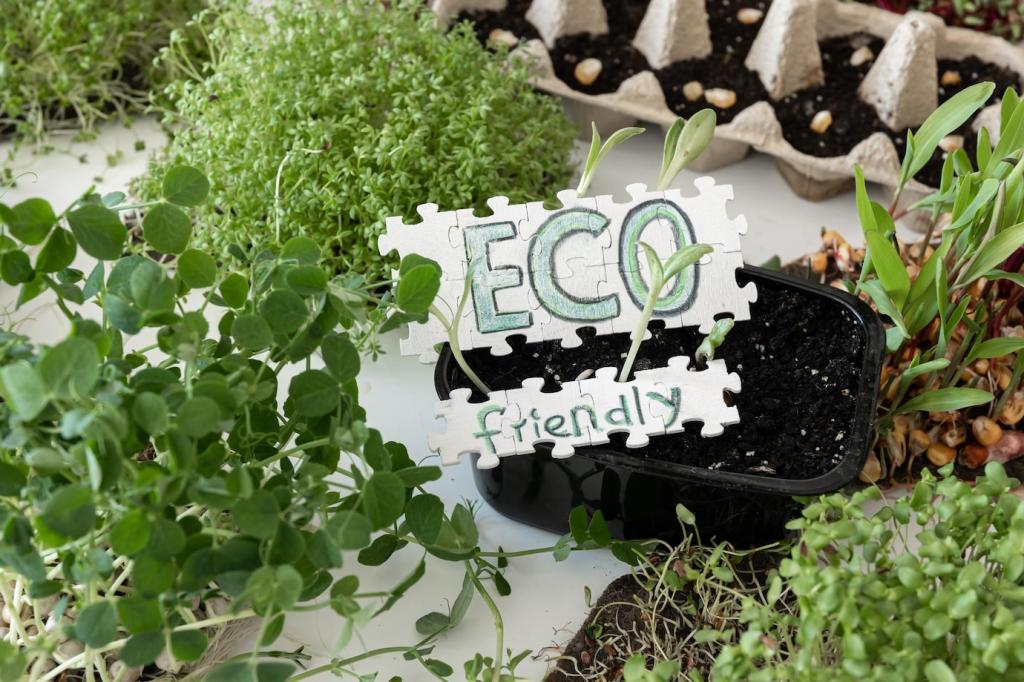
DIY Eco-Friendly Furniture Cleaners: Fresh Shine, Clean Conscience
Chosen theme: DIY Eco-Friendly Furniture Cleaners. Welcome to a warm, practical space where your furniture gets a brilliant, natural clean without fumes, mystery ingredients, or waste. Learn easy recipes, smarter routines, and share your own tips with our curious, caring community.




Tried-and-True DIY Recipes
Combine 2 tablespoons jojoba oil with 1 tablespoon white vinegar and 3 drops lemon essential oil in a small bottle. Shake before each use, apply sparingly to a cloth, and buff along the grain. Test on a hidden spot first, and avoid unfinished wood.
Tried-and-True DIY Recipes
Mix 2 cups distilled water with 1 teaspoon castile soap in an amber spray bottle. Optional: 2 drops lavender. Spray onto your cloth, not the furniture, then wipe and buff dry. Avoid combining castile soap with vinegar, which can curdle and reduce cleaning power.

Material-Smart Care
Sealed versus unfinished wood
If water beads up, you likely have a sealed finish that tolerates a slightly damp cloth and gentle soap. Unfinished wood is thirsty—avoid water and stick to dry dusting, with the lightest touch of oil only when needed. Always follow the grain.
Leather and faux leather
Use a damp cloth with a drop of mild soap for routine cleaning, then dry immediately. Avoid vinegar on leather, which can dry it out. Condition real leather sparingly with jojoba; for faux leather, keep it simple: water, mild soap, and soft cloths.
Bamboo, rattan, and cane
Vacuum with a brush attachment to lift dust from crevices, then wipe with a barely damp cloth. Never soak. To prevent brittleness, keep these pieces out of harsh sunlight and humidity extremes. A periodic light oiling helps bamboo maintain its supple, golden look.
Stain Triage Without Toxins
Water rings on wood
Gently warm the spot with a hair dryer on low, moving constantly until the haze fades. Alternatively, rub a tiny dab of plain white toothpaste mixed with baking soda, then buff with oil. Test carefully and work slowly to protect the finish.
Grease on dining chairs
Blot, don’t rub. Dust on cornstarch or baking soda to absorb the oil for thirty minutes, then vacuum. Follow with a cloth dampened in a mild castile soap solution. Finish by drying thoroughly and buffing, so no shadow of the stain remains.
Ink on leather armrests
Touch a cotton swab lightly dipped in rubbing alcohol to a hidden test spot first. If safe, dab the ink with gentle, short motions—never soak. Wipe with a damp cloth, dry immediately, and condition lightly to restore suppleness afterward.
Storage, Safety, and Sustainable Habits
Write the recipe and mix date on every bottle. Water-based sprays are best used within two to four weeks; oil-based polishes last longer. Mixing small ensures freshness, fewer preservatives, and reliably consistent results on your favorite pieces.
Storage, Safety, and Sustainable Habits
Always patch-test cleaners on an inconspicuous area and wait for full drying before treating the whole piece. Keep pets away during cleaning, avoid risky essential oils, and ventilate. Your routine should respect sensitive lungs, paws, finishes, and fabrics equally.


